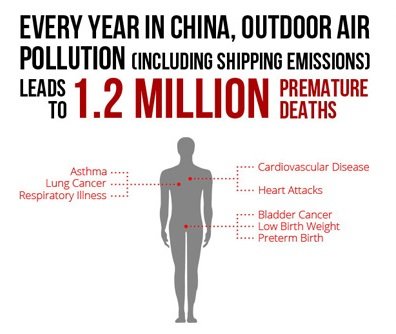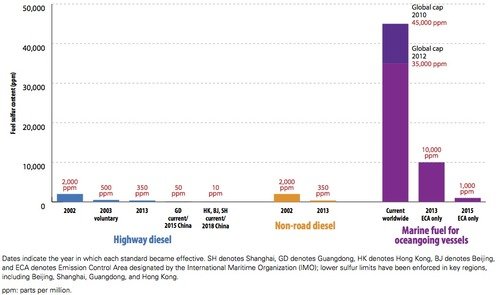As President Obama and other Asia-Pacific leaders gather in Beijing for the upcoming Asia-Pacific Economic Cooperation Summit, climate change and air pollution will undoubtedly be on the agenda. This summit therefore provides an important opportunity for these leaders to address one of the most significant –and largely unregulated -- sources of toxic air pollutants and black carbon emissions in Asia: its ports and shipping system.

Asia is home to nine of the ten busiest and most densely populated container ports in the world – seven of them in China. As detailed in NRDC's new report, The Prevention and Control of Shipping and Port Air Emissions in China, container ships loading their cargo in China and elsewhere in Asia are free to run on dirty bunker fuel, a waste product of traditional fuel oil processing containing a number of pollutants that are known to cause cancer, respiratory illness and premature death, as well as exacerbate climate change and damage the oceans. The sulfur levels in marine bunker fuel alone are 100 to 3,500 higher than that permitted in on-road diesel fuel in China. As a result, one container ship cruising along the coast of China emits as much diesel pollution as 500,000 new Chinese trucks in a single day.

Yet thanks to increasingly stringent regulations elsewhere, these same ocean-going vessels (OGVs) are required to switch to low-sulfur fuel before they reach the other end of their journey in North America, the U.S. Caribbean Sea, the North Sea and the Baltic Sea. Starting in January 2015, the fuel sulfur limit in these four regions (known as Emission Control Areas, or ECAs), currently 10,000 parts per million (ppm), will be lowered to 1,000 ppm (0.1 percent). New vessels traveling to any port in North America or the U.S. Caribbean will also be required to reduce their NOx emissions by 75 percent starting in 2016. As detailed in our report, these new pollution standards are driving the development of 21st century ports and shipping emission control systems, including alternative fuels and advanced emission control technologies on ships.
The public health and environmental benefits of controlling shipping pollution are both enormous and cost-effective. The public health benefits in North America alone are expected to be more than ten times the compliance costs. Since China's port cities are among the most densely populated and busiest in the world, the benefits there would likely be even greater. Yet rather than clean up their pollution for their entire journey, these vessels are still switching back to dirty bunker fuel before they return to China.
Controlling emissions from ports and shipping would give China's war on pollution a much-needed boost. Following Hong Kong's lead, a number of other ports in China, most notably Shenzhen, are beginning to pay attention to emissions from ships and port activities. Yet although these initial steps are encouraging, much more work needs to be done to ensure that these plans are backed by solid, port-specific analysis and detailed implementation measures. This is necessary in order to ensure cost-effectiveness, enlist the support of all stakeholders, and avoid merely shifting ships and their pollution to other less-regulated ports.
NRDC has worked for over two decades to eliminate dirty diesel fuel and clean port operations worldwide, including pioneering action plans to clean up the largest toxic hotspots, implement clean freight and reduce port-related pollution in the United States and elsewhere. NRDC was also the only NGO invited to join the U.S. government delegation to the International Maritime Organization to create a North American Emission Control Area. We hope the information in our new report will help support to the development of clean shipping and port initiatives in China.
Unlike the factory closures and other temporary measures Beijing is planning for the APEC summit, tackling pollution from shipping and ports in China can help clear the air and protect the planet long after the world leaders return home.


